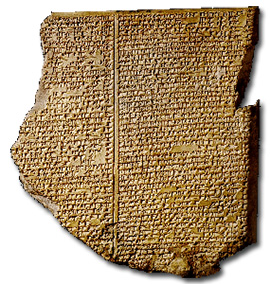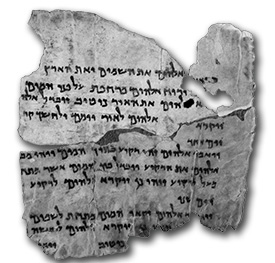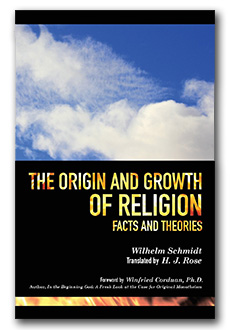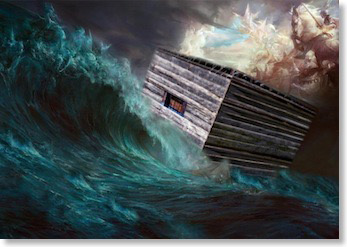By David P. Diaz, Ed.D.
It has been asserted that the biblical story of Noah and the flood descended from another ancient story, the Gilgamesh Epic (Epic).1 If this were true, the Bible’s story would likely be a later, derivative account and probably not historically reliable. On the other hand, opposing arguments have also been put forth to suggest that the Epic relied on the Hebrew story of Noah and the flood. Historically, this has been a much-disputed topic, with proponents on both sides. There seems to be at least three possible solutions: (1) that the Gilgamesh Epic flood story derived from the Genesis account; (2) that the Genesis flood story derived from the Epic; or (3) that both accounts descended from a common source.
As a lover of history, I am interested in questions like this one because it provides me the opportunity to delve into the histories, myths and legends of ancient cultures. The question to be answered in this essay is: What is the relationship between the flood accounts of the Gilgamesh Epic and the book of Genesis?

How Many Flood Stories?
Ancient Semitic language and archeology scholar, Gleason Archer (1982), noted that flood stories have been preserved from the most diverse tribes and nations throughout the world including: Babylonians, Sumerians, Greeks, Hindus, Chinese, Hawaiians, Mexican Indians, and many others (p. 83). It has been claimed that there are more than 200 flood traditions2 throughout the world (Osanai, 2004).
Of all the flood stories, the Sumerian and biblical written accounts are the closest in chronology (Archer, p. 83). The Gilgamesh Epic, written in the second to third millennium B.C., tells the story of Utnapishtim3 who was instructed by one of the gods (Ea) to construct a vessel to save himself and his family, along with a wide array of animals.

The book of Genesis was written in the second millennium B.C., 4 but some of the stories alluded to in the early chapters of Genesis reflect a much older tradition. The ancient manuscripts of the book of Genesis include colophons (inscriptions appended by a scribe to mark the end/beginning of a literary unit or book), which provide seams in the narrative. These seams, or divisions, support the probability that archival records were transmitted and preserved from much earlier periods (i.e., suggesting they were passed on through earlier oral or written tradition). None of the other books in the Pentateuch5 have the same literary structure as Genesis, which includes eleven colophons (Wiseman, 1985). The archival divisions created by these colophons, point to collected oral and/or written traditions that may have been older than the Babylonian epic. Indeed, the Hebrew oral and/or written tradition of the flood is very old and may well have been produced by Noah himself (Hanna, 2011).
The Earliest Religious Tradition
One of the premises that have led some to suggest that the writer of the Genesis account relied on the Gilgamesh Epic is the assumption that the religious views of the human race evolved from an original paganism (variously assumed to have been animism, polytheism, or pantheism), and eventually arrived at the ethical monotheism of the Bible. Since the Epic was written within a polytheistic culture, and since—as the story goes—polytheism is older than monotheism, it has been suggested that the Epic must be the older (and supposedly more accurate) of the two accounts because it is based on an older religious tradition. The conclusion is that the Epic must have served as the basis for the biblical account.

While there is some early evidence to support this claim, both the Hebrew and Sumerian peoples are considerably older than their extant writings portend. Both cultures likely had historical tradition that dated far earlier than the extant writings that are currently possessed. Therefore, to clarify the issue, it is necessary to find what can be learned through various scientific disciplines about what religious tradition is the oldest: monotheism or polytheism.
Linguist, ethnologist, theologian, and historian of religion Wilhelm Schmidt (1883-1961), has provided comprehensive and persuasive evidence that the earliest known religion was monotheism. In his condensed and republished work, The Origin and Growth of Religion: Facts and Theories,6 he described how, as time passed and cultures overlapped, monotheism moved away from its early pristine state and devolved into the practice of polytheism and other pagan religious forms. Schmidt’s arguments for primitive monotheism (i.e., belief in a ‘Supreme Being’) were based not only on existing records such as the Bible and other ancient writings, but also from studies of preliterate tribes. Schmidt and his team of researchers arrived at their conclusions after conducting exhaustive fieldwork in a large number of cultures over the span of forty years between 1912 and 1954 (Hanna, 2011). It is clear from Schmidt’s research that the most primitive of ancient cultures professed belief in a “Supreme Being,” who was creator of all life and the source of all goodness. (See Schmidt pp. 269-273 for a list of other reported attributes of this Supreme Being.)
Schmidt described the progression of primitive religion beginning with the simple concept of monotheism, to the more complex, even chaotic, mix of animism,7 polytheism,8 pantheism,9 etc. He concluded that, “Wherever remnants of the primitive peoples are still discoverable…they show belief in a Supreme Being…[and] likewise manifest that such a belief is an essential property of this, the most ancient of human cultures, which must have been deeply and strongly rooted in it at the very dawn of time, before the individual groups had separated from one another (p. 261).”
The jury is still out on which religious tradition is the most ancient. However, since the monotheism of the ancient Hebrews may represent a more developed state of the earliest known monotheistic tradition, there is no reason to think that the biblical stories (including the flood account) were derived from a more primitive religious tradition like animism or polytheism. There is also no reason to assume that the Bible was dependent on the Babylonian Epic. Therefore, based solely on the assumption that monotheism was derived from polytheistic religions, there is no reason to assume that the Bible’s flood story was dependent on the Epic.
Differences Between Flood Stories
Because of the plethora of records of flood accounts from around the world, it is obvious that there was an important flood in far antiquity. In the land of Mesopotamia, where yearly floods were the norm, the mention of a catastrophic flood, whose proportions were distinct from all others, points to a significant historical event. Although this event was recorded in the traditions of both the Mesopotamians and the Hebrews, the two accounts are distinctly different in detail and purpose. Old Testament scholar, Kenneth Kitchen (2006) has indicated that the two accounts stand out in such a way “as to preclude either the Mesopotamian or Genesis accounts having been copied directly from the other (p. 425).” In his book, “On the Reliability of the Old Testament,” Kitchen notes the primary differences: (1) The Mesopotamian gods sent the flood simply because they could not stand the noise made by humanity. On the other hand, it was the reprehensible moral actions of the people that prompted the God of the Bible, YHWH,10 to condemn mankind. (2) The Mesopotamian gods hid their plan from humanity (although one of the more friendly deities, Ea, “leaked” the word of impending destruction to Utnapishtim), while YHWH commanded one man—Noah—to build an ark. (3) The respective boats differ greatly (see next paragraph). (4) The duration of the floods differ, with no account or timing from the Epic, but a precise account and timing in the Bible. (5) A greater number and range of people piloted the Mesopotamian craft, unlike for Noah, who took only his family. (6) The details of sending out birds (to seek out land) completely differed between the accounts. (7) The Mesopotamian hero left the ark on his own and had to present a sacrifice to the gods (who were angry at first that any man escaped the deluge), while Noah stayed in the ark until YHWH called him forth. (8) The land of Mesopotamia was replenished directly by divine activity, but YHWH left it up to Noah, his family, and the surviving creatures to replenish the earth through natural means.

Between these two flood stories, the Genesis account is not only substantially different from the Epic, but is also more detailed and credible. Noah’s ark11 was reportedly huge in size—approximately the size of a small ocean liner—with three levels of deck, which tripled its useable space to over 1.5 million cubic feet.12 The ark was made from gopher wood (Gen. 6:14), which is a strong, flexible material. This material, combined with the size and shape of the ark, would have made it very stable.
Whereas the dimensions of the biblical ark made it a seaworthy vessel, the ark built by Utnapishtim, as recorded in the Gilgamesh Epic, was purported to be in the shape of a cube, which would have constantly overturned in a raging flood. This prompted Archer to say, “A more impractical and unseaworthy craft could hardly be imagined (p. 84).”

Of all the flood stories, only the Bible includes a precise description (“ship’s log”) of the events that happened during the flood. The Genesis account denotes the date of the inception of the flood, the length of the downpour, the length of time that the water remained at its maximum, the date at which the tops of the mountains became visible, the length of time until the first evidence of new plant growth, and the precise day of Noah’s emergence from the ark. Like most other legends, the Gilgamesh Epic does not list specifics and is “mythical and vague (Ibid).”
Regarding the deities mentioned in these two accounts, Dr. Mark Hanna (2011) noted the differences:
The Epic is filled with finite, capricious ‘gods’ who are in petty conflict with one another and whose power and activities depend on sacrifices by human beings. Its gods are crudely anthropomorphic in striking contrast to the transcendent, ethical Creator God of the Genesis record.
Similarly, Archer p. 84) adds:
the stark contrast between the quarrelsome and greedy gods of the Babylonian pantheon and the majestic holiness of Yahweh, the absolute Sovereign over the universe, furnishes the strongest basis for classifying the Gilgamesh account as a garbled polytheistic derivative from the same original episode as that contained in Genesis 7–8.
Conclusion
No matter what conclusion one supports, it is often pointed out that the Bible and Gilgamesh accounts do share certain similarities: (1) a flood was sent as divine punishment; (2) one man was instructed to build a vessel; (3) family and animals were taken aboard the vessel; and (4) those on the vessel survived so that mankind was preserved (Kitchen, p. 425). As noted earlier, a perusal of the details of the two accounts have shown them to be quite different, but even if they weren’t, the existence of similarities in two different accounts does not necessarily reflect literary dependence. It is always possible that two or more accounts may stem from independent descriptions of the same event. Both accounts are quite old, and the fact that they share similar details is most likely due to the fact that both cultures shared common views of the world and both had a common interest in universal religious themes: divine justice, death, and the relationship between humans and their deities. Thus, even vague similarities may point to the historical reality of the event in question (i.e., a catastrophic flood), especially in view of the fact that recollections of a great flood that destroyed all of mankind are a worldwide phenomenon.
Many scholars have studied the relative dating and historical validity of the Bible and Gilgamesh accounts of the flood. Nozomi Osanai, who earned her M.A. in 2004, titled her Master’s Thesis: “A Comparative Study of the Flood Accounts in the Gilgamesh Epic and Genesis (2004).” Osanai, who studied the Akkadian language, in which the Gilgamesh Epic was written, argued that both accounts descended from a common origin. She concluded that both traditions were citing the same event [incorporating their own hero and religious worldview into the account] and that, “the flood account in the Epic is the story which lost historical accuracy and was distorted, whereas the Genesis Flood account is the [more] accurate historical record of the Flood event.”
In conclusion, it seems likely that the writer(s) of the Gilgamesh Epic recounted the same or similar flood as Genesis and did so within their own polytheistic framework. Thus the flood stories may be completely separate accounts that independently bear witness to the historical reality of one great flood.
References:
Archer, Gleason L. (1982). Encyclopedia of bible difficulties. Grand Rapids, MI: Zondervan.
Hanna, Mark M. (2011). Biblical Christianity: truth or delusion? Xulon Press. Kindle Edition.
Kitchen, K. A. (2006). On the reliability of the Old Testament. Grand Rapids, MI: William B. Eerdmans.
Osanai, Nozomi (2004). A comparative study of the flood accounts in the Gilgamesh Epic and Genesis at https://answersingenesis.org/the-flood/flood-legends/flood-gilgamesh-epic/introduction/ accessed Oct. 10, 2017.
Schmidt, W. (2014). The origin and growth of religion: facts and theories (H. J. Rose, Trans.). Proctorville, OH: Wythe-North.
Wiseman, P. J. (1985). Ancient records and the structure of Genesis: A case for literary unity, ed. D. J. Wiseman. Nashville: Thomas Nelson Publishers.
About the Author
David P. Diaz, Ed.D. is the publisher and owner of Things I Believe Project. An educator and author, Dr. Diaz has a lifelong love of learning. His pen name (aka “Don Quixote”) comes from his love of chasing windmills (i.e., truth and other ideals) and his penchant for tongue-in-cheek humor: “Don Quixote was developing his arguments in such an orderly and lucid way that for the time being none of those listening could believe he was a madman.”
Footnotes
- The Gilgamesh Epic (circa 16th century B.C.) was derived from an earlier Atrahasis Epic (circa 18th century B.C.). The two accounts are very similar, but not identical).
- Tradition, in this sense, means to hand down or deliver stories from one generation to another. These stories could be handed down through oral tradition, written tradition, or both.
- Utnapishtim: While the hero in the Gilgamesh Epic was Utnapishtim, the protagonist in the older Epic was named Atrahasis. The god who helps the hero in the Gilgamesh Epic was named Ea, while in the Atrahasis Epic was named Enki.
- The dating of the ancient documents mentioned in this essay is a complex topic that deserves its own consideration. Suffice it to say, there are good reasons to believe in the dating of the documents as posited in this essay. However, the older view that the book of Genesis was written between B.C. 600–200 simply cannot be reasonably maintained.
- Pentateuch refers to the first five books of the Bible, which are Genesis, Exodus, Leviticus, Numbers, and Deuteronomy. The word Pentateuch comes from two Greek words that mean “five books” or “five scrolls.”
- The Origin and Growth of Religion: Facts and Theories, is the book referenced in this essay. It is a condensed (i.e., manual or handbook) version of Schmidt’s original 12-volume work: “The Origin of the Idea of God, which was published in 1931.”
- Animism is the belief that natural objects and other natural phenomena in (and including) the universe possess souls (anima).
- Polytheism is the belief in more than one god, or in many gods.
- Pantheism is a belief that god is impersonal and tends to identify god with nature (the universe).
- YHWH is the Hebrew name for God. It was written YHWH because the ancient Hebrew language did not have vowels in its alphabet. YHWH is known as a tetragrammaton (meaning “four letters”). Because of the lack of vowels, scholars disagree on how YHWH is to be pronounced (likely pronounced “YAH-way”).
- Noah’s ark: The dimensions of the biblical ark are listed in Genesis 6:14-16. Based on the understanding of a “cubit” (18-21 inches), the ark was approximately 450 long, 75 feet wide, and 45 feet high, with three decks. This profile (i.e., long, wide, and low) would make the ark very stable in the water. The ark had a roof, to keep out the rain and was covered with pitch, both inside and out.
- 1.5 million cubic feet: All measurements are based on the “cubit,” which is generally taken as approximately 18-21 inches. This measurement was based on the length of the arm from the elbow to the tip of the middle finger and was considered the equivalent of 6 palms or 2 spans.

Why were the crucial findings of Prof. Dr. Israel Finkelstein and Neil Asher Silberman neglected in this article?
The main reason is that this article has space limitations. If it were a book, Master’s thesis, or doctoral dissertation, there would have been an exhaustive review of literature. In journal length articles this is not feasible. You will see this at work in most peer reviewed journals. I’m assuming the source you mention by Dr. Israel Finkelstein and Dr. Neil Asher Silberman comes from their book, The Bible Unearthed: Archaeology’s New Vision of Ancient Israel and the Origin of Sacred Texts. A good read, but not compelling, in my estimation.
The difficulty of claiming this is that one must ignore the clear and precise descriptions of the materials and size/shapes of the two flood stories.